
Director Terrence Malick uses the visual effects in ‘Tree of Life’ to express his ideas about the origins of life and time. VFX Supervisor Dan Glass and FX teams around the world built the shots using a spectacular mix of animation, image capture and compositing techniques.
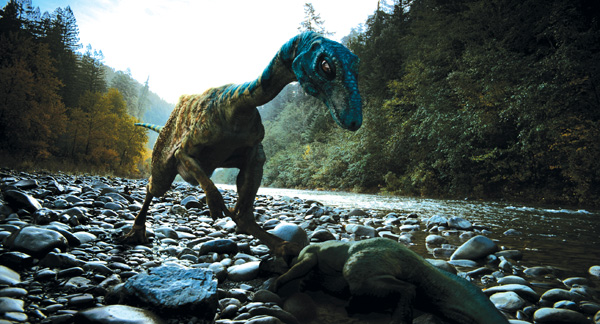 |
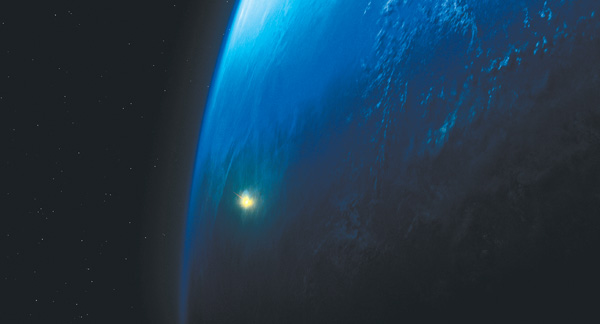 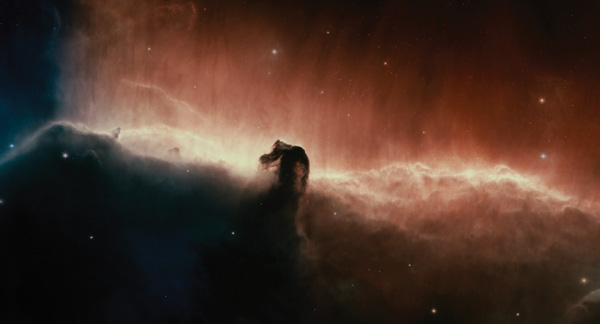 |
| Dan Glass and Terrence Malick met over five years ago to start on the ‘Tree of Life’ project. They discussed diverse topics, references and philosophies, contributing to the film’s experiential quality and its usual use of visual effects.
Inspiration Dan Glass was thrilled at the opportunity to work with Terrence Malick, a director who had inspired Dan to get involved with movies to begin with, but when he got started in visual effects, he found himself working on an entirely different type of film than those Terrence was making. Terrence wanted to tell a history of time, covering many unphotographable concepts by using analogous photoimagery, such as terrain that can stand in for different periods of time or live action material that suggests extreme scales and scenes that most people imagine but never actually see. A strong element of the brief was using symbolic, suggestive images instead of CG. Dan’s background is in compositing, so a challenge to hide the film’s VFX to a large extent appealed to him. “What is hopefully evident in the result is a collection of practical components. That may lead to a conclusion that digital elements have been minimized, but in fact they play a greater role than people recognise. We took a cautious approach with a goal of authenticity and naturalism, more like found artefacts and events,” he said. Rare Chance This was a rare chance to help interpret the visual aspects of scenes in a film, where and how it took place. The VFX work on the film was divided into four realms, handled by different facilities. A dinosaur sequence representing earth’s natural history was completed at Prime Focus, supervised by Bryan Hirota and Mike Fink from their Vancouver studio where the animation was done, with compositing and other work done in Winnipeg and Los Angeles. Building Dinosaurs Terrence actually prefers not to use previs or even storyboards because they seem cold and unemotional to him. But the team did do some of their own for the dinosaur sequence though it wasn’t precise in terms of lining up shots for the CG. It was more for the flow and idea behind the whole sequence. For example, previsualising a scene in which a young dinosaur collapses into water helped them decide on the riverbed location and how it should look. Consultants helped choose modern creatures to base the animation on, and even skin colours and textures. The nature of all of the teams’ work required a huge amount of research, not just for the dinosaurs. Specialists including biologist Lynn Margulis and paleontologist Jack Horner were consulted. Sustained Performance Prime Focus worked on the creatures in 3ds Max, sculpting with Mudbox. Their priority was the animation. The length of the shots demanded sustained performances, but not lots of movement or action. They needed to avoid over-animating the dinosaurs, and just letting them behave like animals. The sculpted models were exported from Mudbox back into Max for texture painting, rigging and animation. Dan said, “Water interactions had to be created in some shots, such as when a Dromiceiomimus, a predator, attacks the smaller Parasaur in a puddle. More extensive, subtle water work was done as a wounded Plesiosaur, washed up on a beach, raises its flipper causing ripples and splashes that integrate it into the plate.” The dinosaur sequence comprises about 80 to 90 fairly long shots. Experimental Elements They held three long weekend shoots during the post schedule devoted to such work at a studio they hired near Malick’s home in Texas. Photographic FX supervisor Doug Trumbull joined them to set up experiments – from liquid nitrogen to fluids and dyes in tanks to flares set off under water, lens flares shot through a peep hole arrangement and many others. They heated up ball bearings and other objects, and watched them cool down. All of this was used to compile an array of elements they could put together later to form shots. True to science Celestial Bodies “Early in the sequence are some shots depicting the birth of the first stars – Population III stars – built up from some powerful simulations based on current theories about this era,” Dan explained. “But these scientific simulations look very sparing on detail, so our challenge was to take those with their core data and turn them into something more dramatic. I commissioned a concept artist George Hull to paint frames that Double Negative combined with the scientific data to construct their shots. It was yet another technique, but still based on science. Abstracted Stars “I suggested to the concept artist the idea of painting the scene as a vast cavern on a truly massive scale with explosions lighting the interior. The cavern would represent the interior of the star and the ‘space’ around it would be the compressed matter of the universe. We also kept true to the scientific palette – red walls for the caverns but the light itself would be blue-white. To suggest a vast enough scale, similar to a nebula, we used cloud-like textures for the walls.” At Double Negative, Shake and Nuke were used for compositing, and Photoshop to extract and clean up the Hubble imagery. They used Maya to construct layers for the 3D but much of this task was also handled in the composite. The local team in Austin, who helped break shots into layers and re-project them, did a lot of their work in Nuke as well. Living Microbes One of Us based their microbial work closely on real microscopic footage showing such processes as cell division. But because these are very flat, pressed onto slides, the images show little depth. “For reference, they used some electron microscopy, which shows the full depth but has to be used on dead cells. The team had to take these combined resources to create images with both depth and a living process. Much of the content had to be CG, while capturing the phenomenon graphically. One of Us built their backgrounds by shooting liquid suspended in tanks to show wide panoramas, with depth and light spilling through it. These were combined with CG elements to introduce depth and detail. Textures were shot from rust and other real textures, to give the composite a feeling of real objects. |
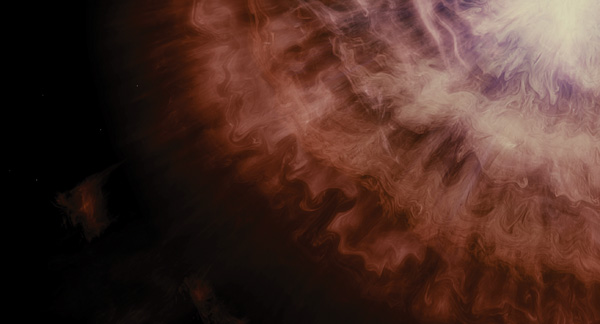 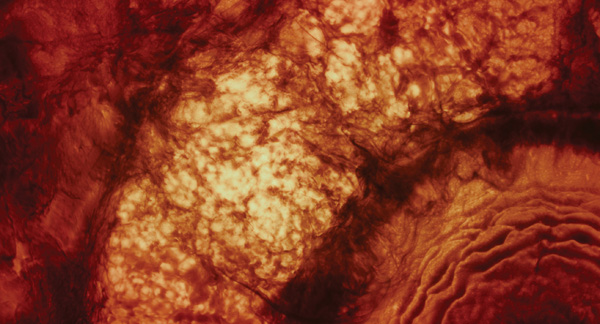 |
| Words: Adriene Hurst Images: © 2010 Cottonwood Pictures |
| MORE FEATURE ARTICLESFeatured in Digital Media World. Subscribe to the print edition of the magazine and receive the full story with all the images delivered to you. Only $79 per year. PDF version only FREEsubscribe |


















